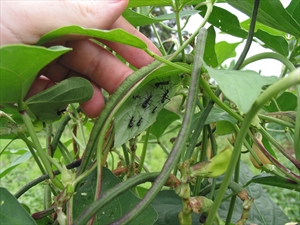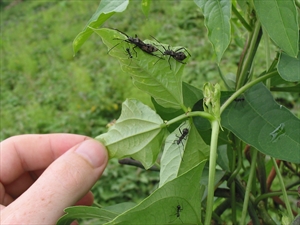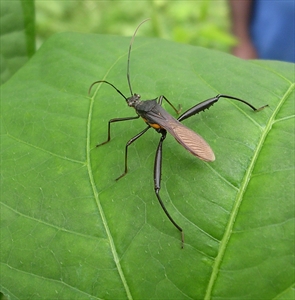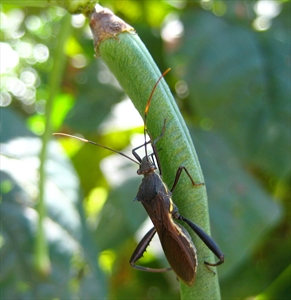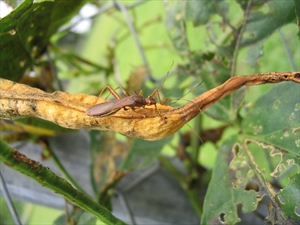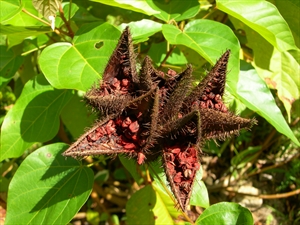- Worldwide distribution. On many kinds of beans. An important pest.
- Eggs are laid singly on leaves; the ant-like nymphs hatch, moulting to 16-18 mm long dark brown adults.
- Nymphs and adults use long, needle-like, mouth parts to suck juices from seeds causing pods to turn brown, shrivel and die.
- Cultural control: do not plant next to older crops where bugs are present; plant Bixa nearby as a trap crop; handpick in early mornings; collect and burn remains of the crop after harvest.
- Chemical control: sprays PDPs: derris, pyrethrum or chilli; synthetic pyrethroids or malathion.
Pacific Pests, Pathogens and Weeds - Online edition
Pacific Pests, Pathogens, Weeds & Pesticides
Bean pod sucking bug (018)
Pod sucking bug
Riptortus species; there are two species, Riptortus serripes and Riptortus linearis.
AUTHORS Helen Tsatsia & Grahame Jackson
Information from Pod-sucking bug - Riptortus serripes (2010) Insects and Spiders in Brisbane. (http://www.brisbaneinsects.com/brisbane_coreidbugs/PodSucking.htm); and CABI (2021) Riptortus linearis. Crop Protection Compendium. (https://www.cabi.org/cpc/datasheet/47644); and from Brown bean bug (2020) Business Queensland. Queensland Government. (https://www.business.qld.gov.au/industries/farms-fishing-forestry/agriculture/crop-growing/pests-field-crops/brown-bean-bug). Photos 1&2 Graham Teakle, Canberra, Australia.
Produced with support from the Australian Centre for International Agricultural Research under project PC/2010/090: Strengthening integrated crop management research in the Pacific Islands in support of sustainable intensification of high-value crop production, implemented by the University of Queensland and the Secretariat of the Pacific Community.
